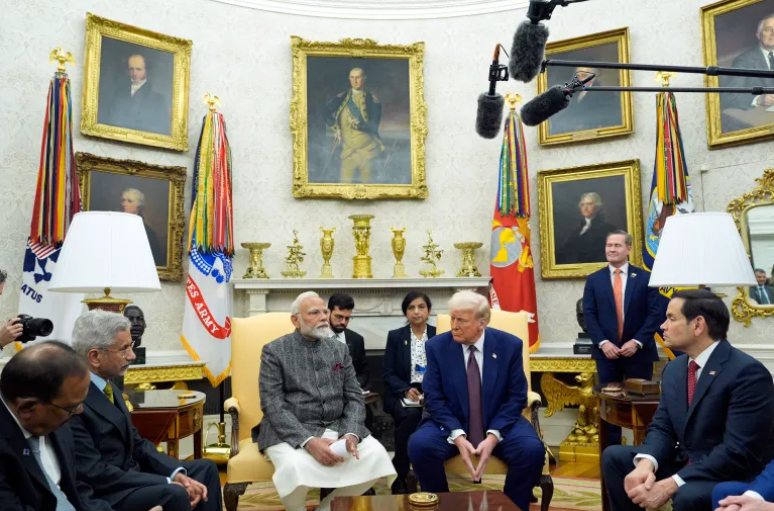President Trump’s recent decisions particularly his steep tariffs on Indian goods and deepening ties with Pakistan have sparked questions about whether the United States is stepping back from its long-stated goal of pivoting toward Asia. Even as Washington claims continued commitment to the Indo-Pacific, its growing rifts with India hint at a more transactional and less reliable region strategy.
Sharp Tariffs Shake India–U.S. Trade Relationships
In early 2025, the Trump administration doubled tariffs on Indian imports raising them from 25% to 50% largely in response to India continuing to buy Russian oil. These sudden moves have disrupted a trade relationship valued at nearly $200 billion and threaten nearly 70% of Indian exports to the U.S., especially in sectors like pharmaceuticals and engineering goods.

India quickly pushed back, condemning the tariffs as unfair and uncalled for. The government stressed that strategic cooperation particularly in defense still remains strong. It confirmed that U.S. arms purchases and joint military exercises, such as the upcoming Yudh Abhyas in Alaska, are proceeding as planned.
Strategic Fallout: Models from the Cold War Resurface
Analysts see parallels between today’s tensions and the post-1998 nuclear test fallout era. India-US relations are being shaped by a blend of trade friction, shifting diplomacy, and erratic governance under Trump. Critics argue that the relationship has increasingly become offensive-driven, with decisions appearing personal rather than grounded in strategic reasoning.
Trump’s too-cozy stance toward Pakistan, including high-profile interactions with its military chief, has added to Indian political discontent. That, paired with the economic stress, risks weakening public and political support in India for closer alignment with Washington.
India’s Multi-Aligned Asia Strategy Emerges in the Void
Amid uncertainty over U.S. reliability, India continues to pursue strategic autonomy. It deepens partnerships with countries like Japan, Australia, and others around the Indian Ocean, while reaffirming its own concept of a free and inclusive Indo-Pacific. Unlike the U.S., India sees the region stretching into the western Indian Ocean—not just the Pacific and emphasizes inclusivity, not exclusion.
The Obama administration’s “pivot to Asia” aimed to counter China through economic, diplomatic, and security initiatives like the Trans-Pacific Partnership But Trump’s withdrawal from TPP and focus on tariffs suggest a retreat from that integrated strategy.
Meanwhile, the Pentagon has continued strengthening military presence in Asia deploying ships and aircraftyet these efforts now lack the diplomatic and economic balance that previously accompanied them.


 Kim Jong-un oversees test of U.S. global hawk-like drone
Kim Jong-un oversees test of U.S. global hawk-like drone  Postal traffic to US down by over 80% amid tariffs, UN says
Postal traffic to US down by over 80% amid tariffs, UN says  China Targets US Fiber Optic Firms After Washington Sanctions
China Targets US Fiber Optic Firms After Washington Sanctions  EU court upholds smooth transfer of data from Europe to US
EU court upholds smooth transfer of data from Europe to US  India faces world football ban for second time in three years
India faces world football ban for second time in three years  Singapore Remains Asia’s Most Peaceful Country in 2025
Singapore Remains Asia’s Most Peaceful Country in 2025